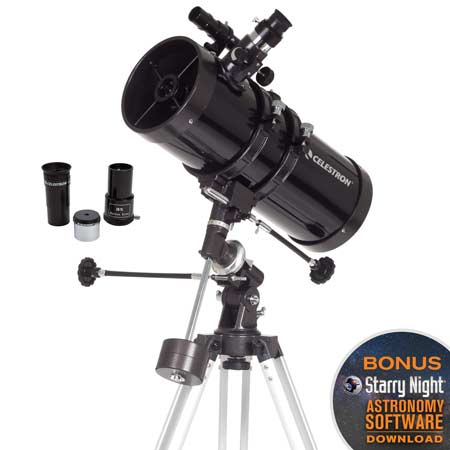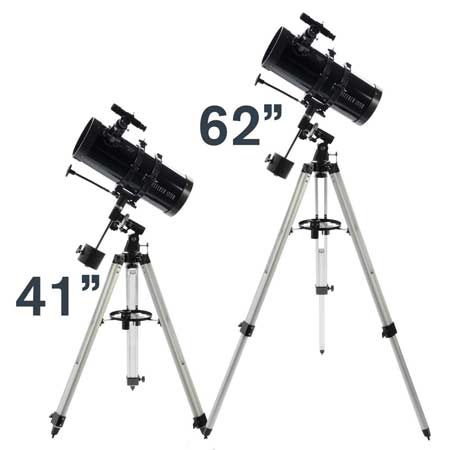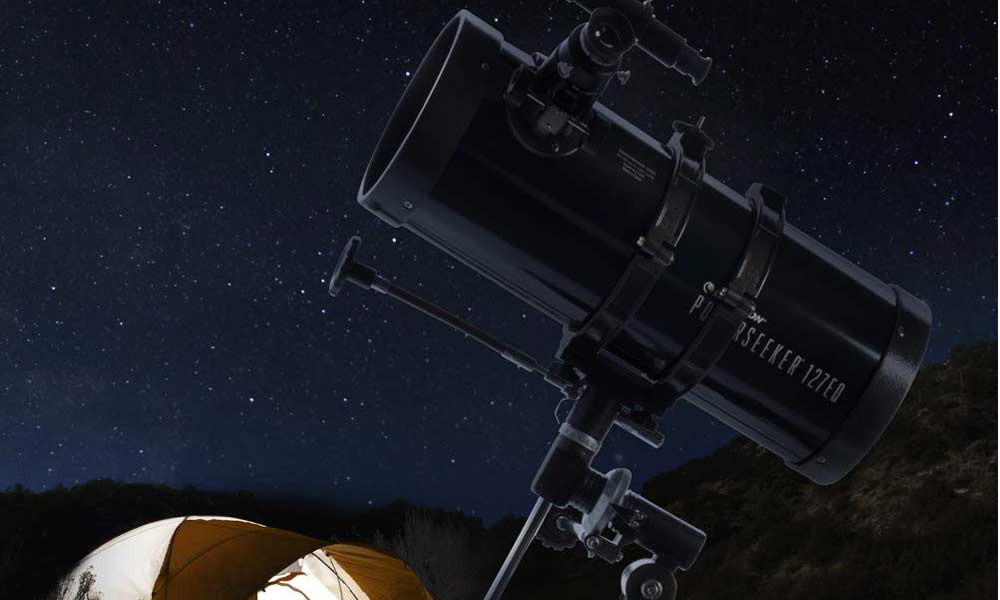The powerful telescope also tracks objects beyond the solar system such as Andromeda Galaxy, Orion Nebula, etc. Built with a magnification power ranging from 150X to 450X, the telescope is designed to use 4 mm and 20 mm eyepieces, including a 3X Barlow lens for enhanced magnification power of individual eyepieces.
Here I am going to tell you about best Telescope under $200 price. Hope you will love it. Let’s go to know more regarding this topic.
What We Like
We like that the telescope is compact and portable. It’s easy to disassemble and with light weight, carrying it on the go is easy. This make the telescope ideal for use anywhere at any time.
You can pack it for camping, picnic or to take with you when going for any outdoor activity. It also comes with many accessories for enhanced functionality. The 2-year limited warranty offers protection from manufacturing faults for replacement and a guarantee of prolonged use.
What We Don’t Like
Although the telescope is of good quality and delivers its intended design purpose, an experienced astronomer won’t find it useful. Entry level users would have to buy another telescope when they’re ready to move to the next level in exploring the universe. What’s more, it can’t last so many years.
Opt for this device if you’re looking for power, quality and ease of use in a beginner-level telescope. It’s built with a user-friendly interface for intuitive use and varied features to offer an amazing stargazing experience.
Whether you’ve used a telescope before or looking forward to your first, this affordable instrument will meet the needs of your entire family. Expect to use the telescope for a good number of years.
Features of the Celestron PowerSeeker 127EQ Telescope
- A focal ratio of 7.87
- 127 mm (5 inches) aperture
- 50X magnification 1 and 250X magnification 2
- 20mm (0.79 inches) eyepiece 1 and 4 mm (0.16 inches) eyepiece 2
- 3X Barlow lens
- 1000 mm focal length (39.37 inches)
- 5 x 24 finder scope
- 43 feet linear field of view
- Aluminum optical coating
- A free astronomy software that’s downloadable helps understand how to use the instrument
- German equatorial mount
- 20 inch (508 mm) optical tube length
- Accessory tray
- 17 lb weight
- 329 times light gathering power

OUR RATING
PROS & CONS
PROS
- It comes with a sturdy equatorial mount to auto track objects in the sky
- The design is compact and lightweight for portable use when you go camping
- The high quality glass optics give view to clear images at high contrast
- It comes with an accessory tray for easy organization and convenient accessory storage
- Fast and easy to setup; no special tools are needed for assembly
- It’s easy to use and comes with a 2-year limited warranty
- High image brightness and contrast or clarity
- USA-made and manufactured by a pioneer brand
- Cost-effective, and its power and features give value for money
- Four eyepieces deliver better and wider viewing range of terrestrial objects
CONS
- It’s not ideal for serious astronomers with advanced needs
- It’s built for low-end beginner use and thus can’t give fine details of objects
Buying Advice
When looking to buy the best telescope for your unique needs, various factors come into play. First determine your needs to find out if you need the best telescope under 200 for beginner use or one under 500 for intermediate use. If you’re an advanced astronomer, consider the best telescope under 1000 or more to meet your needs.
After developing a budget, look out for a large aperture to ensure you view bright and clear images. Make sure that the magnification on offer comes with a reasonable aperture for unmatched stargazing experience. The two go hand in hand. If you simply want to view celestial objects as a beginner, you’ll find a telescope with low magnification ideal for your needs.
On the other hand, a large aperture accompanied with high magnification power would be handy for advanced users seeking to see fine details of celestial objects. The focal length and focal ratio are also important consideration factors.
Based on your needs, determine the type of telescope you want. Check out compound telescopes, refractor telescopes and reflecting telescopes. Reflector telescopes are more affordable than refractor variations, but require maintenance in mirror alignment and recoating. However, reflecting and compound telescopes are available in large designs than their refractor counterparts at more cost-effective prices. Finally choose a reliable telescope brand that has been on the market for years to ensure you get a good instrument and value for your money.

Conclusion
The best telescopes under 200 make great gift ideas for beginners, enthusiasts and even kids. However, make sure the person you’re giving the telescope to as a gift appreciates the terrestrial world and loves to gaze at the stars. It’s a good way to ensure that your gift will be appreciated.
Whether you’re looking for the best telescope for you or want to appreciate someone close to you with a gift, you’ll love the Celestron PowerSeeker Telescope designed with basic user needs in mind. It’s portable, easy to setup and use.
Visit Amazon today to order your best telescope under 200 and begin viewing various objects in space from your backyard or on the go.
Celestron is a leading manufacturer of telescopes worldwide. It was founded in 1975 and has redefined the astronomy industry and how humans perceive the universe. It manufactures telescopes, sports optics, microscopes and related accessories.
The microscopes range from digital microscopes to biological microscopes while binoculars range from spotting scopes to solar observing scopes. Designed for beginner astronomers, the PowerSeeker 127EQ Telescope is what you need to explore the universe and watch various celestial bodies from your backyard.
The telescope features a manual German equatorial mount with slow motion knobs for controlling the instrument. It’s sturdy and tracks celestial objects seamlessly across the sky. The premium glass optics support viewing of the solar system, including Saturn and its surrounding rings, the Moon, and the Galilean moon of Jupiter.

